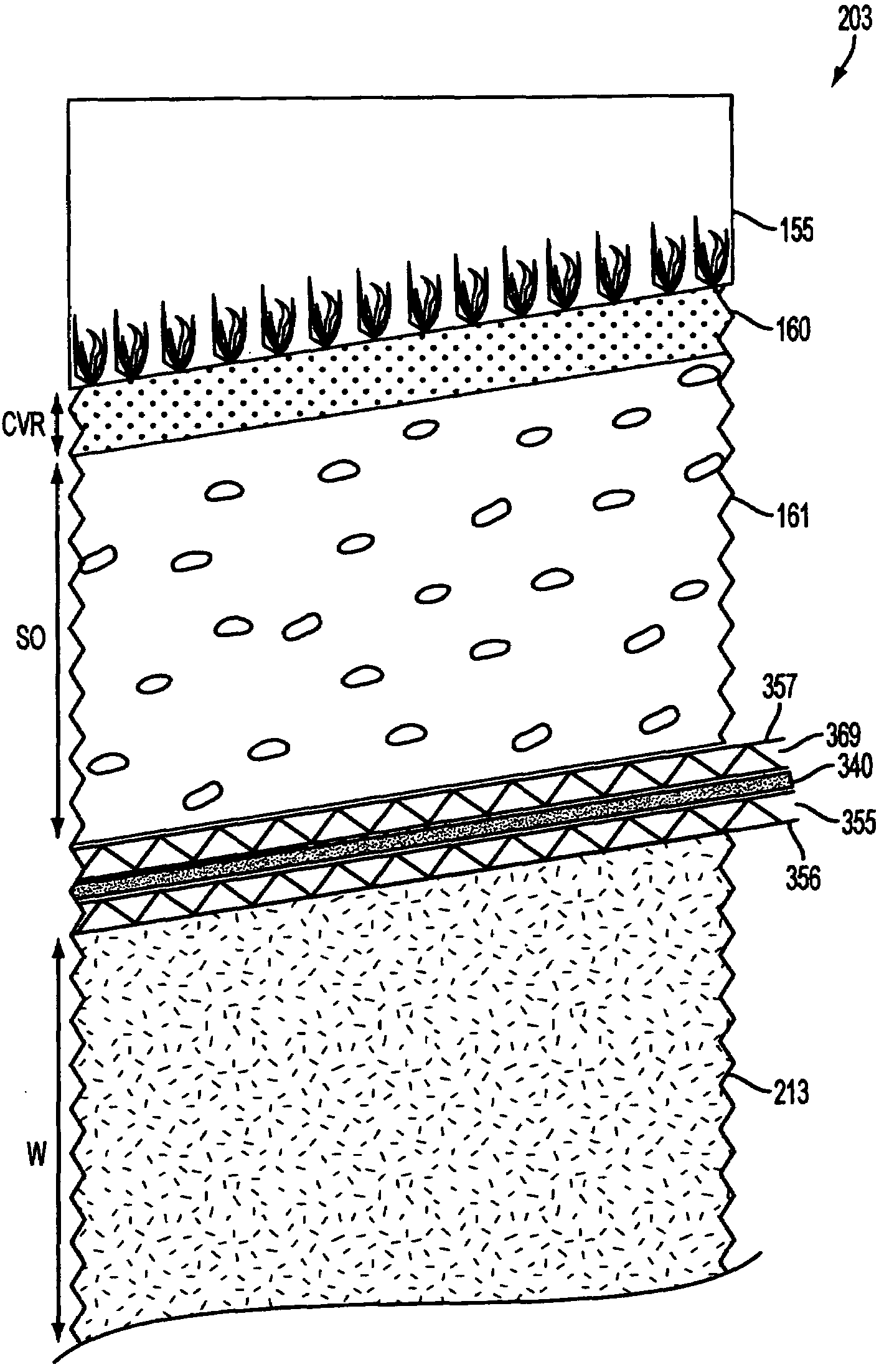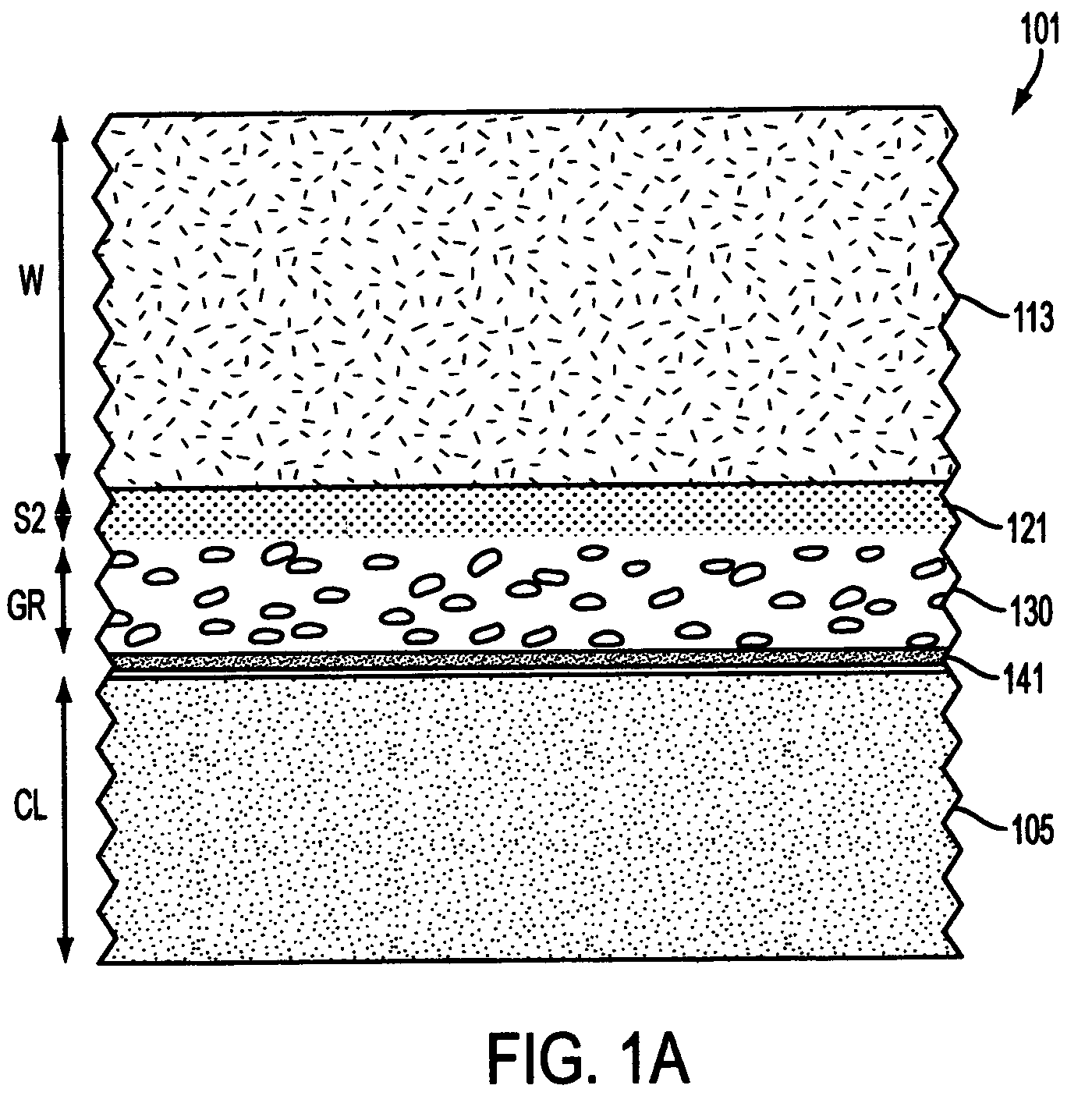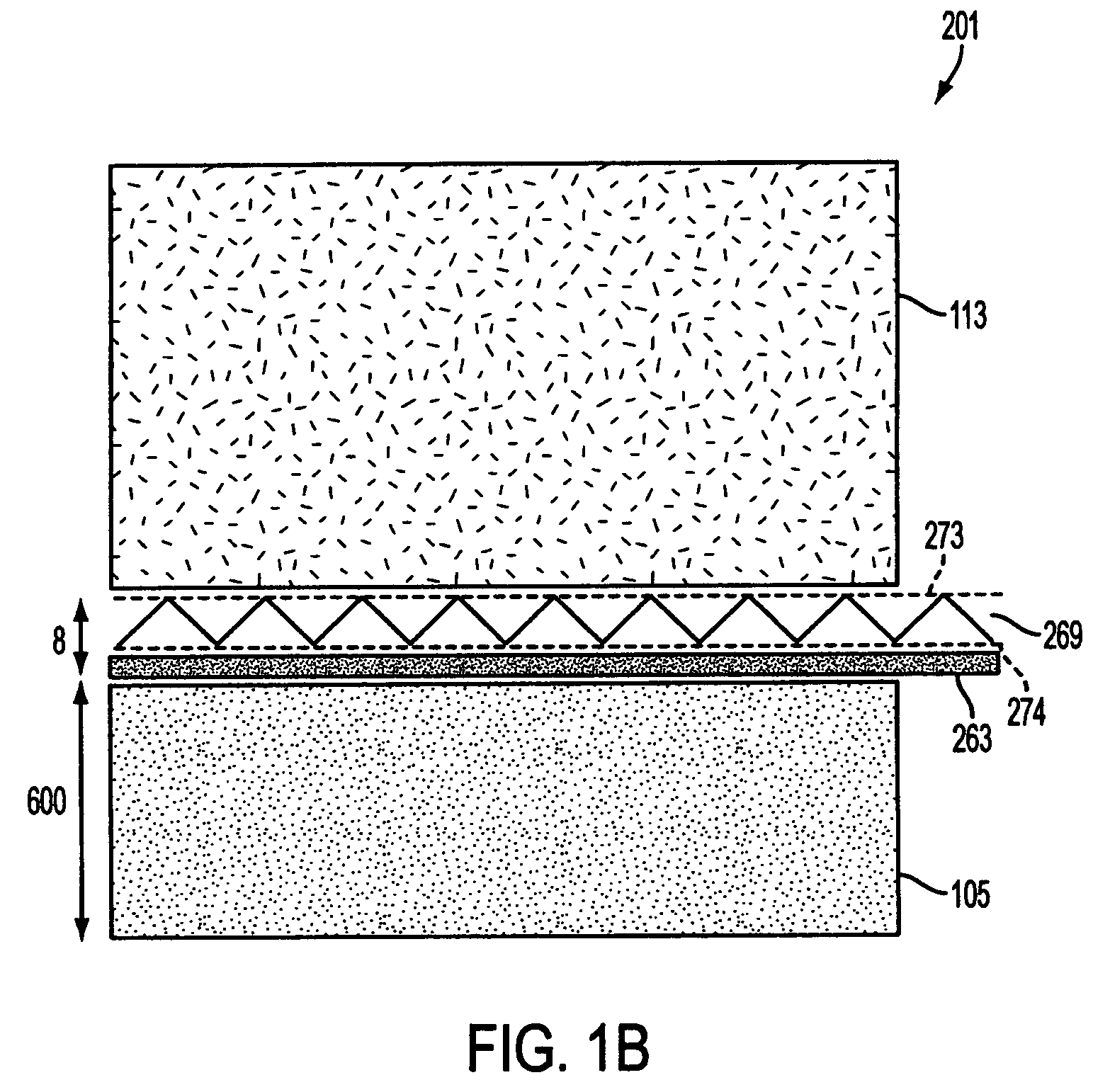Drainable base course for a landfill and method of forming the same
a landfill and drainable technology, applied in water cleaning, excavations, roads, etc., can solve the problems of affecting the environmental environment, affecting the drainage effect, and affecting the drainage effect, and achieve the effect of forming the same, and reducing the cost of forming
- Summary
- Abstract
- Description
- Claims
- Application Information
AI Technical Summary
Benefits of technology
Problems solved by technology
Method used
Image
Examples
Embodiment Construction
[0052]The present invention may be understood with respect to the following figures which are exemplary and not exclusive. As one of skill in the arts will appreciate, numerous embodiments of the present invention are within the scope and spirit of the present disclosure.
[0053]FIG. 1(a) shows an idealized cross-section of a conventional design of a municipal solid waste system with conventional minimum liner system. With reference to FIG. 1(a), municipal solid waste system 101 comprises clay liner or base 105, of thickness CL, which is typically a minimum of 600 millimeters (“mm”). Base 105 is topped by conventional geomembrane 141. In turn, conventional geomembrane 141 is covered with gravel layer 130, of thickness GR, typically a minimum of 300 mm. Gravel layer 130 is covered with conventional sand layer 121, of thickness S, typically a minimum of 150 millimeters. Sand layer 121 is covered with waste overburden 113, of thickness W, and typically from several meters to several doze...
PUM
 Login to View More
Login to View More Abstract
Description
Claims
Application Information
 Login to View More
Login to View More - R&D
- Intellectual Property
- Life Sciences
- Materials
- Tech Scout
- Unparalleled Data Quality
- Higher Quality Content
- 60% Fewer Hallucinations
Browse by: Latest US Patents, China's latest patents, Technical Efficacy Thesaurus, Application Domain, Technology Topic, Popular Technical Reports.
© 2025 PatSnap. All rights reserved.Legal|Privacy policy|Modern Slavery Act Transparency Statement|Sitemap|About US| Contact US: help@patsnap.com



